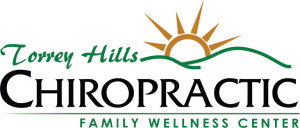Benefits of Foam Rolling
Ever feel tight or awkward in certain area during workouts? Foam rolling cold be the answer to your problems! Take advantage of foam rolling and visit your local gym, or buy your own at Target or Sports Challet.
Read the article below & learn how to roll out your tight and stiff areas so that you wil be able to move better and achieve optimal results in your fitness routine!
What is it?
Not just a piece of foam – this item actually a very powerful tool that athletes use to heal and release tightness and tension so that they can continue to perform better with minimal downtime.
I use a foam roll at least three times a week, and always after any strength training or workouts which have impact on the joints. I HIGHLY recommend using one if you ever experience any tightness or stiffness.
Enjoy the information below. Print up the foam roll guide and get going on this new journey into foam rolling! Trst me, you’ll feel so great afterwards you’ll get hooked!
Kinetic Chain
The kinetic chain is made up of the soft tissue system (muscle, tendon, ligament, and fascia), neural system (nerves and CNS), and articular system (joints). The kinetic chain works as an integrated functional unit. All components of the kinetic chain exist interdependently. If one segment is not functioning efficiently, then the other components must compensate, leading to tissue overload, fatigue, faulty movement patterns, and finally initiates the Cumulative Injury Cycle. For example, muscle tightness restricts the range of motion that a joint may be moved. Because of muscle restriction (tightness, soft tissue adhesions, and neural-hyperactivity), joint motion is altered, thus changing normal neural feedback to the CNS (central nervous system). Ultimately, neuromuscular efficiency is compromised, which leads to poor movement patterns, inducing premature fatigue and causing injury. A SMFR (Self-Myofascial Release) Program, along with Functional Strength Training and Cardiovascular Endurance improves muscular balance and overall performance.
Benefits
- Improves flexibility/joint range of motion
- Corrects muscle imbalances
- Reduces muscle soreness & relieves joint stress
- Decreases neuromuscular hypertonicity (overactivity/stiffness)
How Do You Do It?
To perform foam rolling you simply position a muscle on the roller and use your own body weight to apply pressure into the roller looking for tender spots. When a tender spot is noted just hold on that spot until the tenderness decreases by at least 50% – 70%. The knots or adhesions (that cause the tenderness) won’t just disappear, they will travel to different spots of the area you are working on, so be sure to scan the rest of the area you are working on to find where the knots and adhesions moved to. You can perform this on all the muscles of your body with the exception of directly on your neck and lower back.
When Should You Foam Roll?
Although you can perform the technique after a workout, it is best to Foam roll as part of your warm up (pre-exercise) before any kind of static (reach and hold) or dynamic (active/moving) flexibility work, as well as on your off days to help aid in recovery. You should perform you foam rolling work first because you will be freeing up your muscles allowing for better range of motion during your static or dynamic flexibility work, as well as prepping your body for more intense activity.
______________________________________________________________
 Melanie is a San Diego native, a lover of outdoor activities, cooking, friends & family, & is an entrepreneur at heart. As a personal chef and fitness coach, she has been able to combine her two career passions – which has proven to be an exciting journey. Inspired by a love for cooking & entertaining, Melanie attended the Art Institute of San Diego and in 2006, she became a personal chef. Ever since been then, she has been preparing nutritious gourmet meals (personal meal deliveries & private party catering) for residents in La Jolla, Carmel Valley and all over North County San Diego. Melanie is NASM (National Academy of Sports Medicine) certified and is the founder of Rock Body Food. Melanie truly loves her job of teaching others how to do what she loves & lives herself!
Melanie is a San Diego native, a lover of outdoor activities, cooking, friends & family, & is an entrepreneur at heart. As a personal chef and fitness coach, she has been able to combine her two career passions – which has proven to be an exciting journey. Inspired by a love for cooking & entertaining, Melanie attended the Art Institute of San Diego and in 2006, she became a personal chef. Ever since been then, she has been preparing nutritious gourmet meals (personal meal deliveries & private party catering) for residents in La Jolla, Carmel Valley and all over North County San Diego. Melanie is NASM (National Academy of Sports Medicine) certified and is the founder of Rock Body Food. Melanie truly loves her job of teaching others how to do what she loves & lives herself!










You must be logged in to post a comment Login